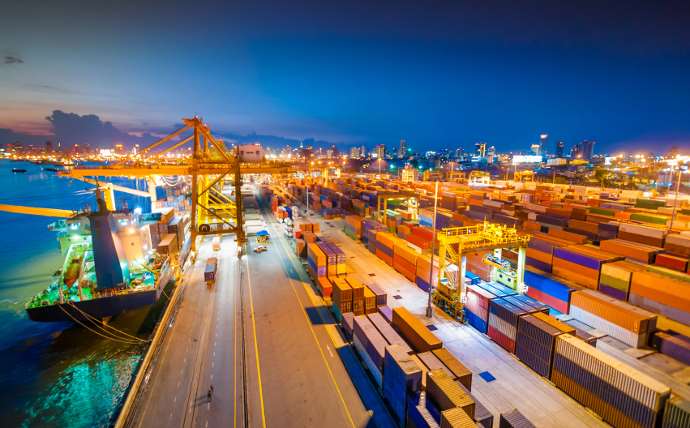Here’s how major ports of India have helped India become a new age economy

The shipping industry is the backbone of the development and growth of every country in the world, and India is no exception to it. The statistics and economic reports of the country reveal the impact of sea ports in india. The major ports serve as the workstation of the international trade industry. Among the developing countries, India boasts the largest merchant shipping fleet in the world. Considering all these aspects, the government of India also launched a National Maritime Development Programme for expanding the port capacity to a minimum of 3,200 MMT.
India hails with 12 major ports and 205 legally registered intermediate and minor ports. Traders and shippers need to have sufficient knowledge about the major seaports in india. To read more about the leading ports in India, click here.
Maritime transportation is the largest medium of trade in India.
Exclusive Facts About sea ports in india
The reports of the Indian Ministry of Shipping claim that over 95 percent of India’s trading as per volume and 70 percent as per value is through maritime transportation. The largest sea ports in india play a very important role in generating these numbers. The right use of technology is also contributing to the development of trading services.
- The total cargo traffic handled by the major ports in India amounted to a whopping 704.82 MT (Million Tonnes) while that of minor ports summed up to 447.21 MT till 31st December 2019.
- The technological development at major sea ports in india produced fruitful results in August 2019 as India happened to be the country to issue BSID (Biometric Seafarer Identity Document) in the world. The device can capture the facial biometric data of the seafarers.
- The Indian government is constructing Special Economic Zones (SEZs) that comprises steel plants, coal-based power plants, and oil refineries. This will boost the employment rate in those cities as well as increase the productivity of the ports.
- The net profit earned by the major ports in India took a considerable hike from INR 1,150 crores in 2013 to INR 3,413 crores in the financial year 2018. The operating margin also reflected a considerable growth from 23 percent to 44 percent during the same period.
- As per the Model Concession Agreement (MCA) introduced in 2018, the legal authorities passed the approval to commence port projects that are more investor-friendly to induce positivity among investors.
- The major ports in India have also registered a significant amount of FDI (Foreign Direct Investment in two decades). The sector received around 1.64 billion U.S. dollars between April 2000 and March 2020.
If a trader takes a complete interest in the development rate of major Indian seaports, he can easily identify business opportunities in the industry.
The Top 3 sea ports in india
Out of the 12 major ports in India, the following three ports are placed at the top spot as per performance, expansion and prospects.
Jawaharlal Nehru Port (JNPT)
The Jawaharlal Nehru Port is hailed as the largest, oldest and busiest sea port in India in terms of cargo traffic. 56% of containerized cargo in the country is handled by JNPT which is the highest of all. It has a custom house, 30 freight stations and a strong connectivity reach to 52 inland ports in India. It largely caters to the employment requirement of East Mumbai. The local people also refer to it as “Nhava Seva”. The major commodities that are transported from this port include sporting goods, pharmaceuticals and textile machinery.
Chennai Port
The Chennai port is crowned as the second major sea port in India. It has also secured the 86th position in the list of “largest ports in the world”. In its 135 years of service, the port has made a considerable contribution to the economic development of Tamil Nadu and South Chennai. It also enjoys the service association of countries like Singapore, Thailand, Malaysia, and China among others.
Mundra Port
The Mundra port earns the third spot on this list given its accomplishments and development over the years. It is the first Indian port to handle 100 MT (Million Tonnes) of cargo. Being the largest private port in the country, it has given a commendable contribution to the growth and expansion of maritime transportation in India. Mundra port has a warehouse capacity of over 137 thousand square meters. The owners are also developing the port for various leading sectors of the country including Agriproduct processing and textiles and apparels.
The performance of major sea ports in india has been extremely beneficial for the Indian economy. The port sector has been registering significant growth over the years with more and more support from the government and leading investors of the country. There is no doubt that international traders are on the bright side because of it. With new ports coming into play and the infrastructural upgradation of the older ones, the overall contribution of sea ports to the Indian economy is also going to increase.

